The compromised car that made Red Bull second-best: Qatar GP analysis
Max Verstappen had no challenge to Lewis Hamilton's Mercedes in the 2021 Qatar Grand Prix. Mark Hughes examines why second place was a good outcome for Red Bull
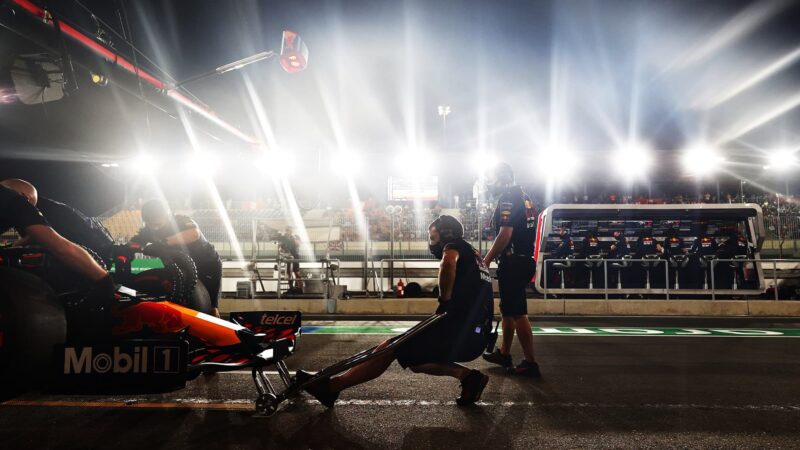
Verstappen never found the right set-up for his Red Bull at Losail
Mark Thompson/Getty Images
It was probably the least exciting race in a season where the bar has been set high, as Lewis Hamilton’s Mercedes disappeared into the floodlit evening. But there were reasons for that.
Hamilton continued where he left off in Brazil, his advantage perhaps not quite so resounding over Max Verstappen but nonetheless leading from pole to chequer. Second place with an extra point for fastest lap was a good outcome for Verstappen on a weekend when his Red Bull was compromised.
Balance & Tyres
Coming in, the Losail circuit was expected to impose greater strains on the rear tyres than the front. The reverse turned out to be true, and in that was most of the reason why the Red Bull was a little behind the Mercedes.
The RB16B tends to struggle relative to the Mercedes when the dominant demand imposed by a circuit is to the front tyres. The Red Bull flourishes against the Merc when limitation is rear tyre temperatures.
Pirelli’s Mario Isola looked at the running data after the first practice session and was initially surprised at what he saw. “The front left was taking a much bigger strain than we expected. At first I thought it must be because the teams were setting their cars up to protect the rear tyres, but when we looked further into it, that wasn’t the case at all.” Around the fast interconnected sweeps – which the drivers loved – that front-left was wearing fast. “We saw that a big part of it was that there are several corners where you are braking into the turn,” continued Isola, “so turning in with a lot of combined load on the tyre, longitudinal and lateral. This always takes a lot from the front tyre.”
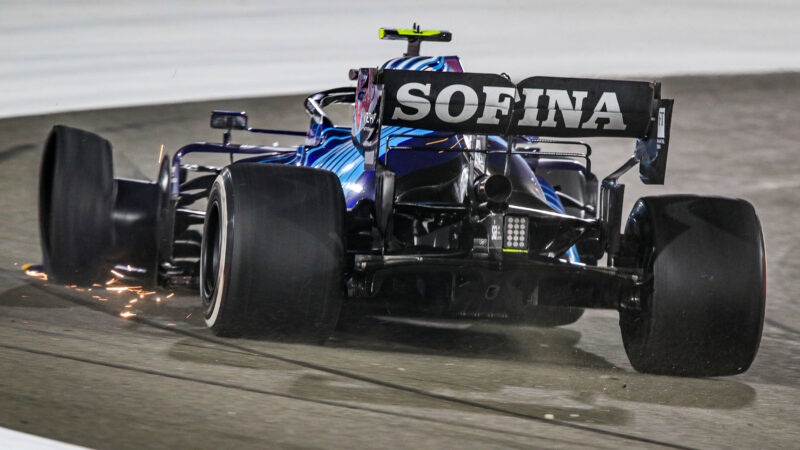
Drivers loved Losail’s sweeping curves but they took their toll on the front-left tyres
DPPI
Added to that were the flat, motorcycle track-style kerbs, which you could run the whole car over – because it was faster that way. Hot, worn front tyres being whacked hard over the kerb serrations led to sudden failures in the race of the left-front for Valtteri Bottas, Lando Norris and the two Williams of George Russell and Nicholas Latifi.
In terms of its natural chassis balance and the way it uses its tyres, this layout was better for Mercedes than Red Bull. Hamilton, revelling in the balance of his car and the committed precision required through the interconnected high-speed bends that comprise much of the track, was in a happy place and over 0.4sec faster in qualifying than Verstappen who could just never quite get the car to rotate the way he liked, the front never responsive enough.
Rear Wings: Mercedes vs Red Bull
The propaganda war between the two teams notched up this weekend and centred around the Mercedes rear wing. Christian Horner believed it had been flexing its trailing edge in Brazil and was pointing to scoring on the underside edge as evidence. Mercedes insisted it was nothing of the sort. Coming into this weekend the teams had been informed the FIA was going to try an experimental new rear wing load test – and Horner believed this foreknowledge explained why the Merc no longer had the big straightline advantage of Brazil. Mercedes said the wings were identical from Brazil to here.
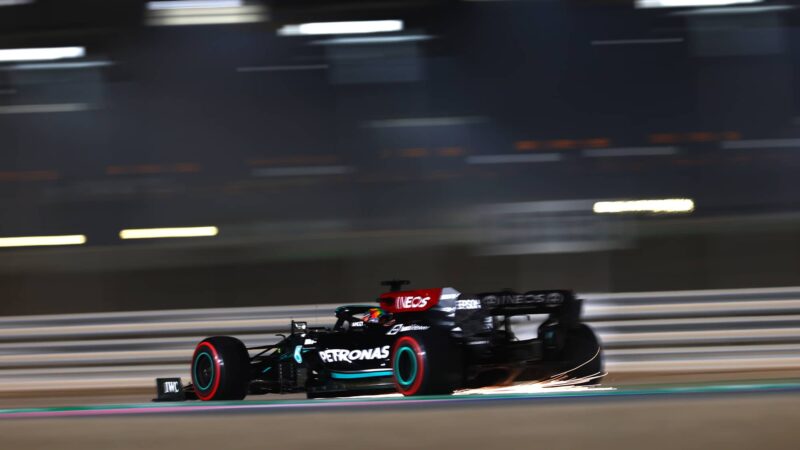
Mercedes maintained a straightline speed advantage in Qatar
Dan Istitene/F1 via Getty Images
In the race Hamilton and Verstappen were down near the bottom of the speed trap, as they each ran in clear air without DRS boosts most of the others benefitted from. But in qualifying, with everyone using DRS, Hamilton was 13th-fastest at the end of the straight (compared to sixth in Brazil), 3.4km/h faster than 19th-fastest Verstappen rather than 7.7km/h. The straightline advantage was indeed reduced but hardly outrageously so – and much of that could probably be explained by the new power unit Hamilton was using in Brazil, but not here… Still the gap over the lap was over 0.4sec. That lap time was being gained exclusively in the turns, despite Red Bull’s bigger wing.
Red Bull had rear wing dramas of its own, troubled in practice by flap oscillations, as the DRS actuator wasn’t maintaining the strain of keeping the flap open at the highest speeds. Just as happened also in Austin and Brazil. For qualifying Red Bull was obliged to fit its big high-downforce wing, previously seen only at Monaco and Mexico. That only made its balance difficulty worse.
Circumstance
Pierre Gasly took too much of one of those flat kerbs on his final qualifying lap and destroyed the AlphaTauri’s front wing as it made contract with – and punctured – a front tyre. He was past the pit entry road and so continued, trailing sparks and carbon fibre debris.
There were yellow flags out for the incident. Verstappen and Bottas, second and third-fastest, fell foul of them, with the former demoted five places and the latter three (single rather than double waved yellows for Bottas). Ironically that put fourth-fastest Gasly onto the front row.
Which of course made things even easier for Hamilton, especially as the other Red Bull of Sergio Perez hadn’t even made it into Q3 and would start 11th and Hamilton on his medium tyres he had a bunch of slower cars on higher-degrading soft tyres between him and Verstappen.
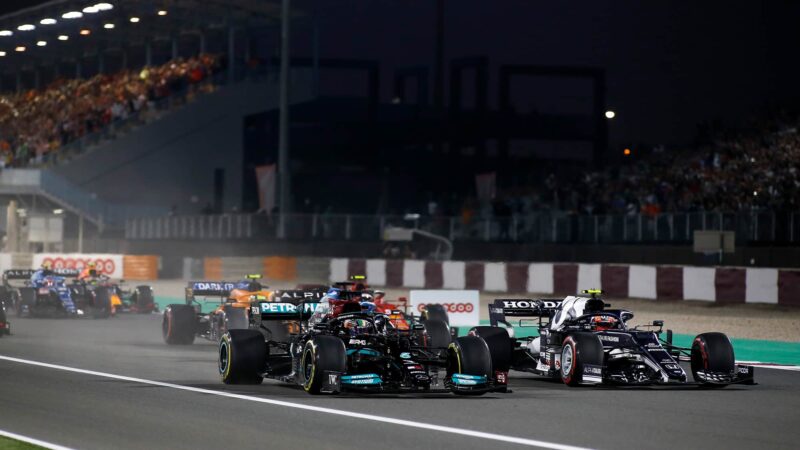
Hamilton had Gasly to beat off the front row after Verstappen’s penalty
Jiri Krenek/Mercedes
Actually, Verstappen took only four laps to get from seventh to second but by the time he got there Hamilton had a handy 4sec gap, which turned out to be impregnable. Every time Verstappen pushed into that gap, Hamilton could respond and even extend. Like this, they locked each other into two-stopping – and thereby avoided the high-mileage hazard of the suddenly deflating left-fronts suffered by the four aforementioned, who were all trying to go long so as to one-stop.
That strategy difference exaggerated the performance gap between Hamilton/Verstappen and the best of the rest, which for almost the whole way was the remarkable Fernando Alonso, promoted to third on the grid after the penalties. Brilliantly feisty and intuitive in where he placed the Alpine at the start, he went around Gasly’s outside at turn two to run an early second, then concentrated in keeping the tyres in shape while holding a good pace in a car which seemed to respond well to the front limitation of the track, with Esteban Ocon only a couple of places back in the sister car.
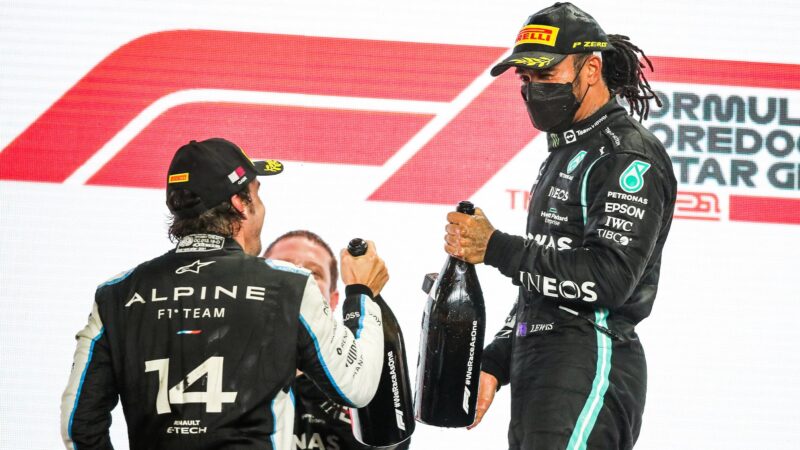
Just like old times…
Florent Gooden / DPPI
Bottas and Perez would likely have been fighting for the final podium slot in the straight running of their races. Bottas’ tyre went on lap 33, entailing a long slow drive back to the pits. Red Bull, having stopped Perez early but intending not to stop again, became spooked by the Bottas tyre failure and converted to a two-stop. Which put him behind Alonso but catching fast at the end. Alonso was saved from attack by a late VSC to clear debris from Latifi’s tyre failure.
It was a superb performance from Alonso and his first podium in seven years.
As Hamilton chatted with him up there, it was like old times. But without the title tension of 2007. Fourteen years on, that’s coming from the other guy up there with them, Verstappen now just eight points clear.

